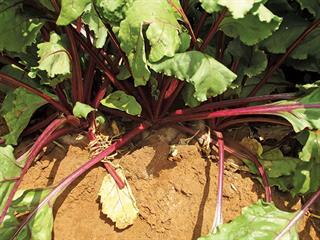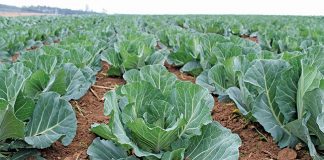
Strictly speaking, beetroot is the edible taproot of the beet plant. It’s a close relative of Swiss chard and sugar beet, and has many health benefits. High-quality beets have a high sugar content and dark internal colour. The tasty young leaves are a good source of Vitamin A and can be prepared in the same way as Swiss chard. The purple roots are rich in Vitamin C.
Climate
In South Africa, beetroot is usually grown in cool regions or during the cooler seasons in warm areas. The growing period varies from eight to 11 weeks in favourable climatic conditions.
Cultivars
Although beetroot is a cool-weather crop, using a hybrid cultivar intended for summer production offers many advantages. The seed is expensive, but these beetroots are of a better quality, more adaptable to extreme high temperatures, more uniform in shape, produce greater yield and have better internal colour. Hybrids also taste better, especially out of season. Cultivars used include: Crimson Globe, Detroit Dark Red, Star 1105, Merlin, Globe Dark Red, Osprey (spring and summer), and Early Wonder (winter).
Planting times
The best planting times for beetroot are spring and autumn; the crop does well during summer on South Africa’s Highveld and winter in the Lowveld. The optimum temperature for growth is between 15°C and 20°C. Beets are not particularly sensitive to heat as long as there is enough moisture in the soil.
Although tolerant of cold, they grow extremely slowly in winter. Leaves may be damaged and growth retarded if there is frost before harvesting. Cold weather may also result in smaller tops.
Germination
Direct sowing can result in good germination at a temperature between 6°C and 24°C. On hot, sunny days, a high temperature at, or just below, the soil surface might injure young plants or even kill them. Sustained high temperatures can retard growth and depress yield, as well as cause an undesirable strong flavour, concentric rings and a coarse texture.
Soil requirements
Sandy to deep, well-drained sandy loam or silt loam, high in organic matter, is recommended for beetroot. Uniform soil moisture is essential for good quality. If the soil is compacted or the clay content is very high, roots are likely to be deformed and to develop a tough texture that reduces quality. Beetroot thrives in deep, rich sandy loam, with a pH of between 6 and 6,5.
Source: Production Guideline for Winter Vegetables, Agricultural Research Council.












